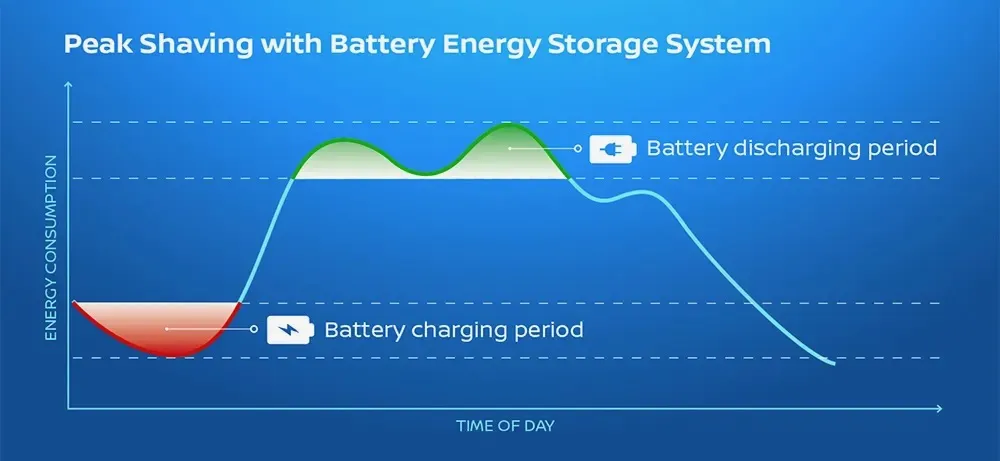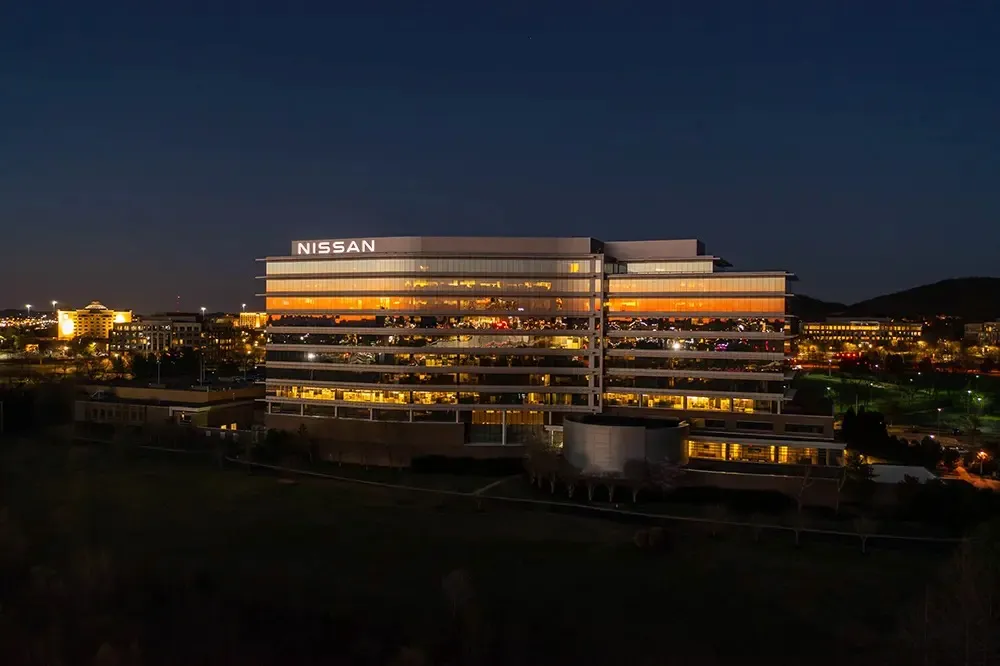- Nissan Leaf batteries are getting a second life
- Nissan expects to make use of the battery packs from about 50-60 Leafs
- The mission is projected to cut back yearly carbon dioxide emissions by as much as 3.7 tons
Used Nissan Leaf batteries will assist energy the automaker’s U.S. headquarters in Franklin, Tennessee.
The automaker introduced Thursday that it’s including two battery programs at its headquarters, situated simply outdoors Nashville, which will likely be charged throughout off-peak instances and can provide energy in periods of peak electrical energy demand, serving to to stability the grid by preserving electrical energy demand from the workplace constructing extra constant whereas lowering emissions.

Peak shaving with Nissan Leaf second life batteries
The set up consists of two assemblies utilizing battery parts from an estimated 50-60 Leaf electrical autos. One incorporates a number of 40-kwh Leaf battery packs including as much as a complete capability of 500 kwh, whereas the opposite makes use of particular person modules.
Nissan expects annual carbon dioxide emissions reductions of as much as 3.7 tons per yr from the mission. Technicians will examine the battery installations for at the least one yr, with a selected deal with how used batteries work collectively regardless of totally different states of well being. The automaker may also work with Center Tennessee Electrical to review potential demand response makes use of, much like initiatives already being undertaken by Normal Motors and Ford, to cut back electrical energy demand from fossil-fuel energy vegetation.

Nissan U.S. headquarters in Franklin, Tennessee
This is not the primary second-life battery mission Nissan has undertaken. In 2015 the automaker unveiled a plan to offer used Leaf battery packs for stationary power storage items within the U.S., and it is experimented with the thought in Europe and Japan as nicely. Different automakers have accomplished the identical. Porsche, for instance, is utilizing Taycan batteries to assist energy one in every of its factories.
The deal with EV batteries’ second life assumes that many batteries will likely be left over as soon as the automobiles they’re put in in attain the top of their usable lives. However it might take a while for the EV fleet to succeed in a big sufficient dimension to provide batteries for something apart from modest initiatives like this Nissan effort. And with fluctuating uncooked supplies costs and the geopolitical and environmental points surrounding their sourcing, there’s some debate about whether or not reuse or recycling is the higher possibility.

